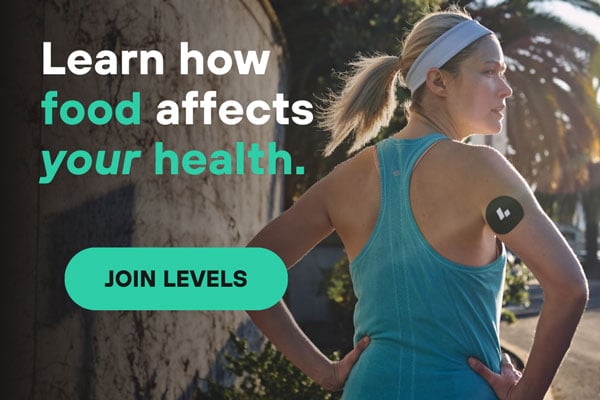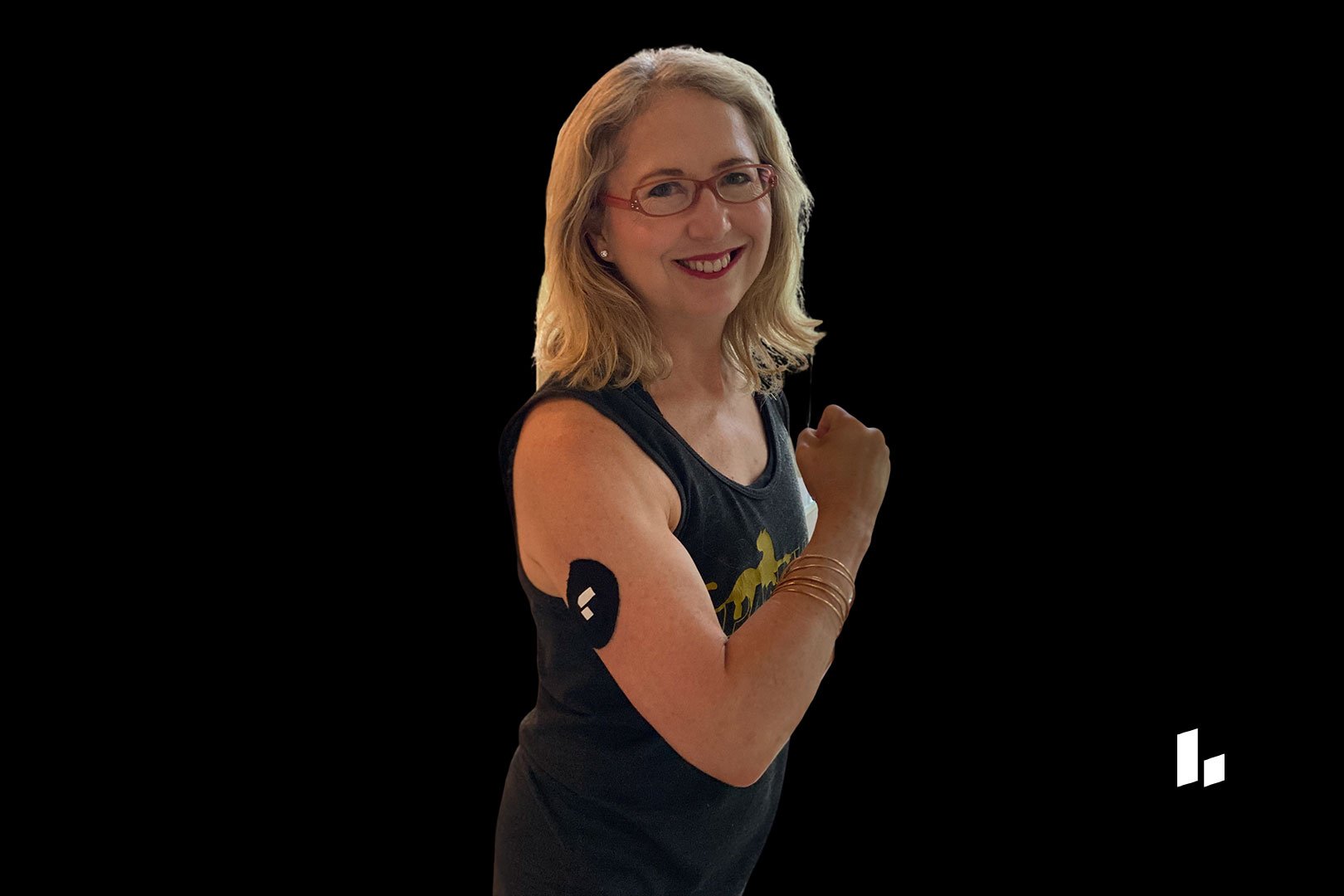Who: Cheryl M., 51
Where: Fort Worth, TX
Time with Levels: 2 years
Most Useful Takeaway: She knows when her blood sugar spikes past a certain point because she starts to feel anxious.
1. What was your health like before using Levels?
While I didn’t have any specific health issues, we have a family history of metabolic dysfunction. Both grandparents on my mom’s side had diabetes. I haven’t been diagnosed with prediabetes, but I want to pay attention to it.
However, I do go in waves with my activity level. For a couple of years, I’ll be really into working out, and then I’ll fall out of the habit and gain weight. The pattern has repeated like that for my entire adult life. Right now, my primary forms of exercise are walking the dog and weight training at home.
2. What made you want to put a CGM on your arm?
Intermittent fasting seems to work well for me. I measured my blood glucose and ketones with Keto-Mojo for a while. That gave me snapshots of my glucose, but I was curious about what my glucose looked like in the moment. I wanted visibility into that window. After learning about Levels through a podcast—probably one from Dr. Hyman or Dave Asprey—I immediately signed up.
Learn more:
3. What were some of the foods that spiked you? What kept your blood sugar stable?
My reaction to corn tortillas, sweet potatoes, and butternut squash surprised me. I expected a small spike, but I noticed that my spike was quite prolonged. After consuming carbohydrates, I sometimes got two spikes, a pattern I learned called a biphasic curve from reading the Levels Blog.
Currently, I’m working on losing weight, so I do 36-hour fasts. Monday, Wednesday, and Friday, I don’t eat. This isn’t something I do continuously throughout the year, but I bring in longer intermittent fasting (IF) when I feel as if I’ve gained weight, and I do it until I’ve reached my goal. (I don’t weigh myself, but I pay attention to how my clothes fit and how I feel and use that as my guide.) IF used this way seems effective for me, and I think it’s way easier than counting calories.
Within my eating window, I focus on protein and fats, such as scrambled eggs for breakfast, a salad with tuna for lunch, and steak or salmon for dinner with broccoli and cauliflower cooked in avocado or olive oil. When I need dessert, it’s a chocolate pot de crème made with heavy cream, egg yolks, and Lily’s dark chocolate chips. That’s a sweet treat that never spikes me.
During my fasting window, my blood sugar remains pretty stable. The only thing I have is a Bulletproof coffee. Once I eat again, I will see a more significant spike. My blood glucose might be under 70 mg/dL, and then when I eat, it will go up to 112 mg/dL. That’s a big change, but I’m not out of the range. At that level, I don’t feel the effects of the spike, but if my blood glucose makes it to 120 mg/dL or higher, I can feel it. I think: Why am I feeling so anxious? And then I remember that it’s my blood sugar. I usually ride it out, though sometimes I’ll take a walk to bring it down.
4. What non-food factors affect your blood glucose levels?
Stress really spikes me. My dear octogenarian friend would probably be mad that I’m telling this story, but he picked me up from the airport once, and I remember one particular car maneuver that stressed me out. Later, I noticed that I had a crazy spike pattern during that time. I hadn’t been eating—I know it was from that anxiety-provoking car ride!
Over the years, I’ve realized that my body is sensitive to stress. When I gain weight, it’s usually during a stressful period, and that weight comes on even without changing my diet.
Another interesting rise in blood sugar happens when I take a hot shower. It’s something that just recently started happening and is an interesting correlation. I know it might be, at least in part, a result of a sensor error, but I’m watching it.
5. You’ve used Levels for about two years. What are you still hoping to learn from the CGM?
Using Levels is like having an accountability partner that helps me stay on track. I’m a person who is motivated by seeing progress. I might challenge myself to see how many days in a row I can go without a spike. For instance, I’ll skip eating something I know will spike me if I’ve already had nine days in a row without one.
Changing the sensor every couple of weeks bums me out because it’s frustrating seeing the sensor adjust in the first 24 to 36 hours when I know my readings aren’t entirely accurate. The upside is that this prevents me from getting too obsessed or attached to my readings.
I’ve been wearing the CGM on and off throughout these two years. I’m looking forward to expanding my catalog of healthy dishes by testing new recipes (suggested by Levels blog, Dr. Hyman, and other leaders in the field) while wearing the CGM.
And I’ll continue my membership because I like having the accountability and insight needed for success.










